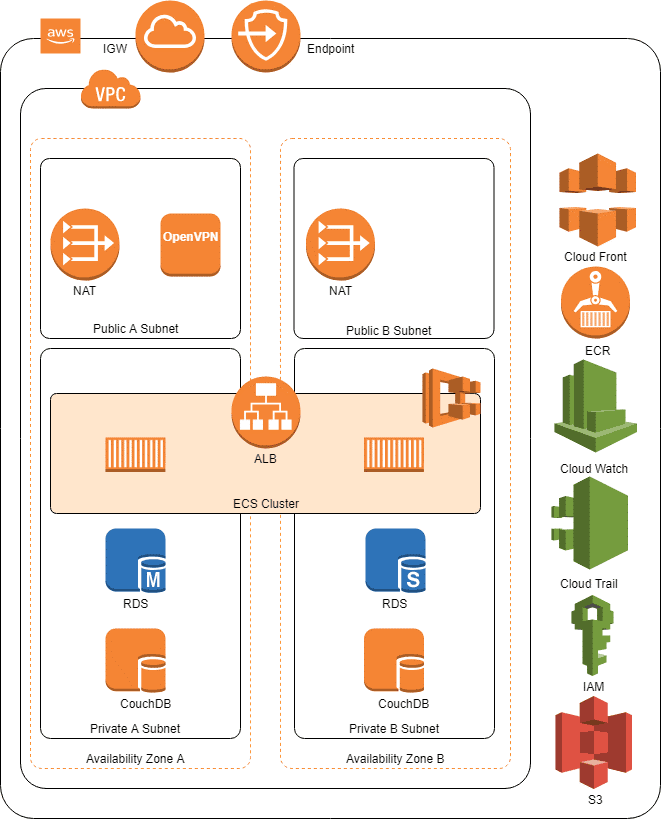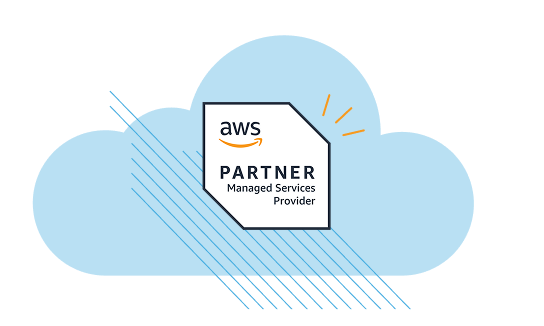Accelerating Time to Market for Smart Building IoT Applications

Challenge
Site 1001 needed a way to speed up application development and deployment to meet evolving customer needs.
Solution
ClearScale implemented microservices architecture and used Docker containers, as well as Amazon Aurora, DynamoDB and CouchDB to handle databases for app development.
Benefits
Site 1001’s IT infrastructure supports automation for development and deployment processes, thus enabling faster development, testing, staging, and production.
AWS Services
Amazon Virtual Private Cloud (VPC), Amazon ECS, Amazon ECR, Amazon Aurora, Amazon DynamoDB, Amazon RDS, Amazon CloudFront, Amazon Route 53, AWS Identity and Access Management (IAM), AWS CloudTrail, Amazon CloudWatch
Executive Summary
Thanks to the confluence of artificial intelligence, machine learning, Internet of Things (IoT), and an ever-increasing array of applications, industrial devices are getting smarter — and generating terabytes of data daily. To help businesses use that information, Site 1001, a smart building technology company based in Kansas, Missouri, developed a unique building performance and operations platform that combines major systems like HVAC with environmental, energy, and IoT data from the thousands of sensors and devices within it. The cloud-based solution powers hundreds of applications that can help building owners, operators, and managers improve efficiency, lower operational costs, improve conditions for occupants, and much more.
The Challenge
With an ever-expanding ecosystem of IoT devices and third-party solutions, as well as its own growing pipeline of new and enhanced capabilities, Site 1001 needed a way to speed up application development and deployment to ensure it could meet its customers’ evolving needs and take advantage of new market opportunities.
The solution had to be efficient and cost effective as well as scalable and secure. It also had to enable Site 1001 to leverage its own data for future product releases and enhancements.
The company requested that ClearScale assist it in developing the optimal solution. The project would require architecting, automating, and deploying multiple environments on AWS for development, testing, staging, and production.
The ClearScale Solution
ClearScale’s first step was to assess Site 1001’s business and technical requirements, along with its current processes. The ClearScale team determined the best approach would be to develop a microservices architecture that primarily employs isolated modules for greater flexibility and scalability.
Various AWS products and services would be incorporated, along with a Virtual Private Cloud (VPC) and VPC peering. The solution would also employ a shared responsibility model, with AWS operating, managing, and controlling the components from virtualization layer down to the physical security of the facilities in which the service operates.
The infrastructure would be designed using Docker, an operating-system-level virtualization software for containers. With Docker, container and virtual machine images can be created that have all the software a server needs already installed and configured.
Infrastructure Diagram

Site 1001’s main workloads would be placed in managed Docker containers and run on Amazon Elastic Container Service (Amazon ECS). Using Amazon ECS, Site 1001 wouldn’t have to install and run its own container orchestration software.
The containers would be securely stored with their lifecycle managed in Amazon Elastic Container Registry (ECR). This would eliminate the need for the software company to operate its own container repositories or worry about scaling the underlying infrastructure. The secure credential store would be implemented on AWS Systems Manager Parameter Store, which supplies secure, hierarchical storage for configuration data management and secrets management.
Infrastructure provisioning and change management would be automated using HashiCorp Terraform. Terraform, an open-source tool, treats infrastructure as code (IaC) that can be shared by team members and edited, reviewed, and versioned.
To handle the relational and NoSQL databases involved in app development and testing in the new environments, ClearScale selected Amazon Aurora, AWS DynamoDB and Couch DB, on EC2.
Amazon Aurora is a fully managed relational database engine that's compatible with PostgreSQL. It’s part of Amazon Relational Database Service (Amazon RDS), a managed database service that simplifies setting up, operating and scaling a relational database in the cloud.
AWS DynamoDB is a fully-managed, multi-region document database with built-in security, backup, and restore, and in-memory caching for internet-scale applications. CouchDB is a flexible, scalable, open-source document database.
Amazon CloudFront, a global content delivery network (CDN) service, would be used to securely deliver data, videos, applications, and APIs to viewers with low latency and high transfer speeds. AWS Route53, a highly available and scalable cloud-based web service, would be used for the DNS.
Application load balancers would be employed to allow containers to use dynamic host port mapping. This would enable multiple tasks from the same service per container instance. Multiple services could use the same listener port on a single application load balancer.
Rounding out the solution would be numerous security components, including a Web Application Firewall and Amazon’s Identity Access Management (IAM) service, which controls access, enforces protection, and provides granular control over permission. Amazon CloudWatch would serve as the monitoring and management service. AWS CloudTrail would enable governance, compliance, operational auditing, and risk auditing of Site 1001’s two AWS accounts — one for its development, staging, and quality assurance (QA) environments and one for its production environment.
As an AWS Premier Consulting Partner, ClearScale would implement these and any other required products and services using AWS best practices. ClearScale would also provide Site 1001 with documentation for software installation, environment setup and deployment, continuous integration/continuous delivery, and use of the various AWS products and services.
The Benefits
With ClearScale’s solution now implemented, Site 1001 is freed up from much of its previous infrastructure management. Most of its development and deployment processes are automated, so Site 1001 can now develop and deploy new applications and enhancements faster than ever — and more cost effectively. It also has complete documentation so it can create environments on AWS for development, testing, staging, and production with a solution that is flexible and scalable.
There are many companies with experience in deploying various cloud environments for app development, testing, and production. But few have the breadth and depth of experience that ClearScale has — particularly in terms of AWS.
When you work with ClearScale, you’re partnering with a team that has the highest level of proven expertise and skill using the Amazon Web Services. ClearScale’s engineers, architects, and developers have achieved Amazon’s highest level of certification: the Certified Solutions Architect Professional and Certified DevOps Engineer Professional.
Equally important, ClearScale’s team can draw upon the extensive expertise in DevOps and other areas, their many “lessons learned,” and their own skills and knowledge to develop solutions to meet your needs today and tomorrow.
